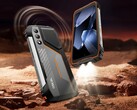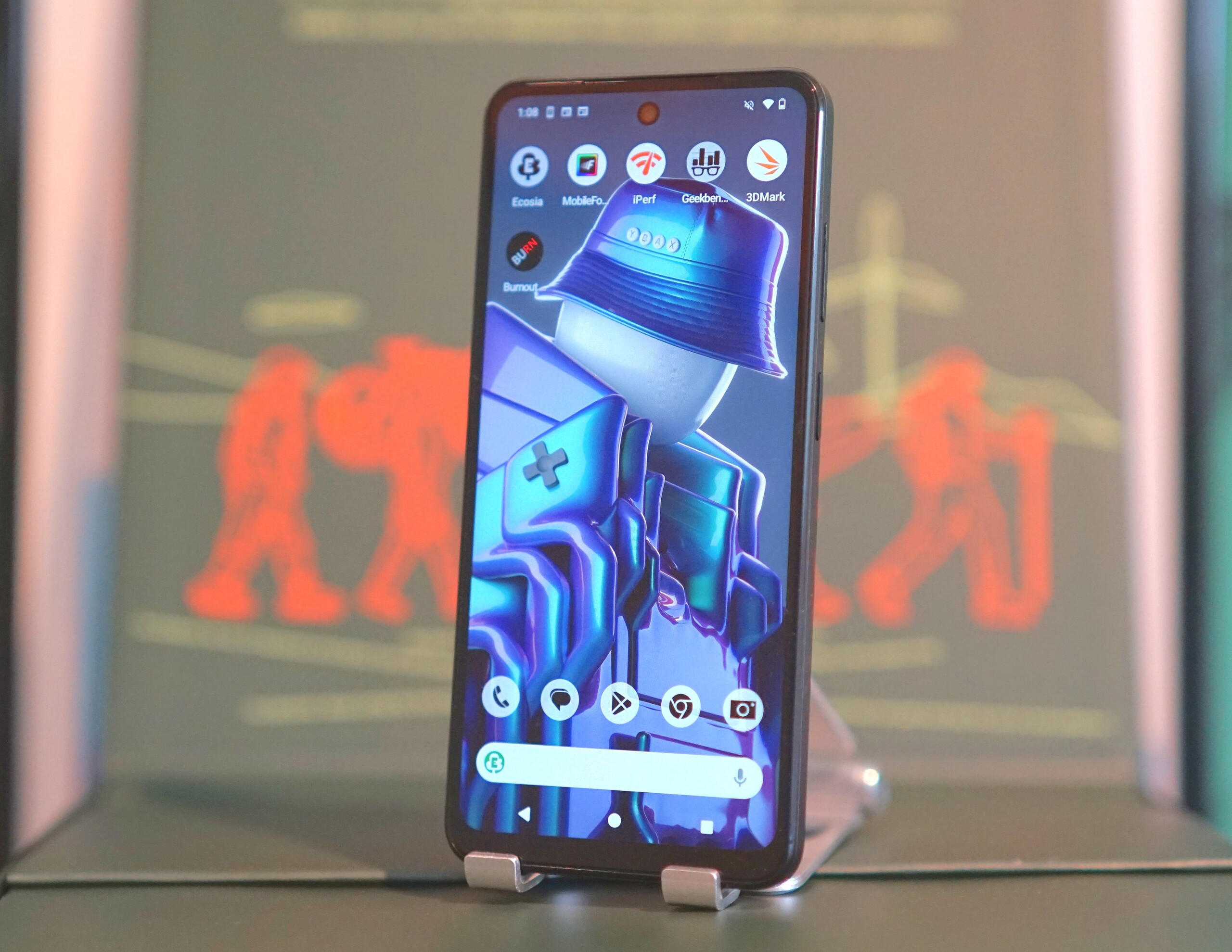
HMD Fusion review - Modular phone with ruggedness and gaming capabilities
Multiple personality.
Everyone wants a modular smartphone, and HMD makes it easy: The HMD Fusion can be outfitted in different ways, turning it into an outdoor or gaming phone. Many parts can also be replaced quite easily. In the test, we evaluate whether this seems too good to be true.Florian Schmitt, ✓ Anton Avdyushkin (translated by DeepL / Ninh Duy) Published 🇩🇪 🇫🇷 ...
Verdict
The HMD Fusion expands its range of applications with its smart outfits, which turn it into either a gaming console, an outdoor pro, or a selfie expert with a ring light. At the same time, it's great that HMD is making its developer kit available to everyone as open source.
The repair is still a long way from being as easy as with a Fairphone 5 where you can simply remove the battery and replace the screen in just a few steps. The HMD Fusion is repair-friendly for ambitious users. However, inexperienced buyers who do not want to damage their device should contact the service department in case of damage.
HMD offers a decent update promise for the price range, but there is still room for improvement in terms of the product's sustainability.
The display should be brighter in this price range, but at least it manages without PWM flickering. The performance of the SoC and the speed of the memory are also only average considering the price.
Overall, the HMD Fusion is a decent mid-range phone that gains flexibility thanks to the Smart Outfits. It remains to be seen how many third-party providers will use the open-source toolkit.
Pros
Cons
Price and availability
The HMD Fusion is already available from many retailers and has already become significantly cheaper.
At the time of review, the variant with 128 GB mass storage was already available from Amazon for about $300.
Possible competitors in comparison
Image | Model / Review | Price | Weight | Drive | Display |
|---|---|---|---|---|---|
| HMD Fusion Qualcomm Snapdragon 4 Gen 2 ⎘ Qualcomm Adreno 613 ⎘ 8 GB Memory, 256 GB UFS 2.1 | Amazon: 1. $249.99 HMD Fusion | Unlocked | Dual... 2. $7.99 beukei (3 Pack) Designed for... 3. $8.99 Anbzsign 2 Pack for HMD Fusi... List Price: 299€ | 202.5 g | 256 GB UFS 2.1 Flash | 6.56" 1612x720 269 PPI IPS | |
| CMF Phone 1 MediaTek Dimensity 7300 ⎘ ARM Mali-G615 MP2 ⎘ 8 GB Memory, 256 GB | Amazon: 1. $11.99 Ibywind 2 Pack Screen Protec... 2. $4.99 Suttkue for CMF phone 1 scre... 3. $4.99 Mr.Shield Screen Protector c... List Price: 269€ | 197 g | 256 GB UFS 3.1 Flash | 6.67" 2400x1080 395 PPI Super AMOLED | |
| Xiaomi Poco M6 Pro Mediatek Helio G99 ⎘ ARM Mali-G57 MP2 ⎘ 12 GB Memory, 512 GB UFS 2.1 | Amazon: List Price: 299€ | 181 g | 512 GB UFS 2.2 Flash | 6.67" 2400x1080 395 PPI AMOLED | |
| Samsung Galaxy A25 5G Samsung Exynos 1280 ⎘ ARM Mali-G68 MP4 ⎘ 6 GB Memory, 128 GB UFS 2.1 | Amazon: $299.99 List Price: 299€ | 197 g | 128 GB UFS 2.2 Flash | 6.50" 2340x1080 396 PPI Super AMOLED | |
| Motorola Moto G85 Qualcomm Snapdragon 6s Gen 3 ⎘ Qualcomm Adreno 619 ⎘ 12 GB Memory, 256 GB UFS 2.1 | Amazon: $485.00 List Price: 349€ | 171 g | 256 GB UFS 2.2 Flash | 6.67" 2400x1080 405 PPI P-OLED |
Table of Contents
The concept of the HMD Fusion needs a bit of explanation, although it's not actually all that new.
Modular smartphones, in which functions can be added or omitted and individual parts can be replaced comparatively easily, have been around before: Motorola, for example, had already introduced the Moto Z in 2016, where you could add a better speaker or even a projector by attaching mods. However, the smartphone was not really successful and remained the only one of its kind.
The concept offers advantages for all sides: Customers can repair the device themselves more easily and customize it to their needs. The environment benefits because the device can be used for longer thanks to inexpensive repairs. And the manufacturer can sell accessories. Apple has at least partially taken up the concept with MagSafe.
So it will be exciting to see whether the HMD Fusion idea works. Let's take a closer look at the device in our test.
Specifications
Case & equipment - Plastic chassis with good repairability
When you unpack the HMD Fusion for the first time, you might think that HMD had forgotten to attach the back. You get a glimpse of numerous screws, a pogo PIN port, and even the battery. But that's the concept of the modular smartphone: leaving the back off so that the customer can install what they need and at the same time allow easy access to all parts. A transparent cover is included with the smartphone so that everyone can see straight away that this is no ordinary cell phone.
The smartphone is solidly built and can hardly be twisted or dented. Nevertheless, the chassis is only made of plastic. This is roughened, which creates a special feel. Black is the only color available for the housing. The phone is protected against dust and splash water in accordance with IP54, but it is better not to take the HMD Fusion on a dive.
The biggest special feature is the Smart Outfits, which can be simply "put on" like a cover and give the smartphone a different look. The Smart Outfits can also be used to add new functions such as a ring flash for the cameras or wireless charging. Some variants are shown in the picture gallery below. We were also able to test some of the outfits, which can be easily put on like a case and automatically connect to the device when required. However, the slim form factor is then of course lost.
Thanks to the open-source toolkit, third-party providers can offer additional extensions and even ambitious private users with programming skills and 3D printers have the opportunity to add functions to their smartphones.
The manufacturer offers two memory variants:
- 6 GB RAM and 128 GB mass storage: 270 euros
- 8 GB RAM and 256 GB mass storage: 300 euros
NFC for wireless charging is on board, the USB port is only connected with USB 2.0 and therefore does not enable wired image output. However, it is possible to share the screen wirelessly.
The microSD reader takes up one SIM slot, so you can either insert two nano-SIM cards or one nano-SIM and the microSD at the same time. However, dual SIM is also possible with an inserted memory card, as there is the option of storing an eSIM profile.
The card reader works comparatively quickly, but cannot utilize the maximum possible data rates of our Angelbird V60 reference microSD card.
| SD Card Reader - average JPG Copy Test (av. of 3 runs) | |
| HMD Fusion (Angelbird V60) | |
| Motorola Moto G85 (Angelbird V60) | |
| Average of class Smartphone (5.72 - 58.9, n=69, last 2 years) | |
| Samsung Galaxy A25 5G (Angelbird V60) | |
| Xiaomi Poco M6 Pro (Angelbird AV Pro V60) | |
| CMF Phone 1 (Angelbird AV Pro V60) | |
Cross Platform Disk Test (CPDT)
Communication, software & sustainability - With 3 years of updates
We measure the connection speeds with our Asus ROG Rapture AXE11000 as a router. These are in the range of other WiFi 5 devices and this is actually the fastest standard that our test device supports. With around 255 MBit/s in the sending direction and around 354 MBit/s in the receiving direction, the HMD Fusion is at best in the midfield compared to similarly priced phones.
A 5G modem is installed, so that you can also use the fastest mobile communications standard currently available. Enough frequencies are supported so that you can also access the mobile internet in some travel destinations, but the HMD Fusion is not a true world phone.
The software is based on Android 14 and remains very close to Google's original operating system. Only the icons on the home screen are mostly in black and white, which is HMD's way of making Digital Detox a little easier by reducing the incentive to call up the apps. However, it is also possible to set colored icons again without any problems. Some third-party apps are pre-installed ex-works but can be easily deleted.
The manufacturer promises feature updates until Android 16 and 3 years of security updates, i.e. until 2027. That's a decent update promise in this price range.
In terms of sustainability, the HMD Fusion scores highly when it comes to software updates. When it comes to self-repair, you can visit iFixit to see how easy or complicated it is: you can't do it completely without special tools, but more experienced users will find the repair quite easy. Spare parts should also be available here soon.
HMD also provides an environmental report for the HMD Fusion, although it does not list the device's CO2 footprint. It also shows that although the device complies with all legal requirements, there are no recycled materials or other measures to reduce the environmental impact. Nevertheless, the packaging consists of 76% recycled material and is plastic-free.
Camera - Mediocre single camera
There is only one camera on the back that can be used for pictures: A sensor with 108 megapixels from Samsung. Normally, the phone takes photos with 12 megapixels, i.e. it combines 9 pixels on the sensor into one pixel and thus increases the light yield. If you want very high-resolution photos, you can also use the full resolution of the sensor in a special mode, but the recording and processing will then take a few seconds.
In standard mode, the main camera takes usable pictures in daylight, but the level of detail could be higher. Bright areas tend to over-illuminate and the dynamic range could also be higher in darker areas. The general image sharpness is average but by no means on par with high-quality smartphone cameras. In low light and high contrasts, the sharpness is OK, but in very bright and very dark areas you can hardly make out any details.
In the lab with full studio lighting, the main camera in our test device shows little detail and a clear blue cast.
Videos can be recorded at a maximum of 1080p and 60 fps. The autofocus takes a little longer from time to time, but the automatic exposure adjusts to changing light conditions quite quickly.
On the front of the phone is a 50-megapixel camera for selfies. It usually uses a quarter of the resolution and offers a decent dynamic range even with bright backgrounds. The face looks reasonably detailed but could be brightened up a little more.
Image comparison
Choose a scene and navigate within the first image. One click changes the position on touchscreens. One click on the zoomed-in image opens the original in a new window. The first image shows the scaled photograph of the test device.
Main cameraMain cameraLow Light
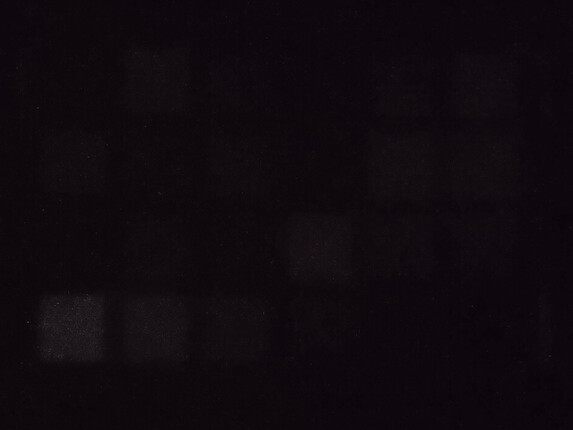
Display - Not quite as bright
The screen is a pitfall of the HMD Fusion: On the one hand, the IPS screen only has a resolution of 1612 x 720 pixels, on the other hand, it cannot keep up with similarly expensive devices in terms of brightness. We measured a maximum brightness of 554 cd/m² and the manufacturer itself states 600 cd/m² as the maximum.
Other devices such as the Samsung Galaxy A25 5G offer an AMOLED screen with Full HD resolution and over 900 cd/m² of brightness. The display on the HMD Fusion is visibly less fine; if you look closely, you can see blurring and even a stepping effect in letters.
The phone is much less flexible outdoors, as reflections quickly appear on the screen glass on brighter days, which can hardly be outshone by the screen.
At least you don't have to worry about PWM: We measured no flickering even at minimum brightness.
| |||||||||||||||||||||||||
Brightness Distribution: 94 %
Center on Battery: 554 cd/m²
Contrast: 2052:1 (Black: 0.27 cd/m²)
ΔE ColorChecker Calman: 3.28 | ∀{0.5-29.43 Ø4.78}
ΔE Greyscale Calman: 3.6 | ∀{0.09-98 Ø5}
96.3% sRGB (Calman 2D)
Gamma: 2.145
CCT: 7322 K
| HMD Fusion IPS, 1612x720, 6.6" | CMF Phone 1 Super AMOLED, 2400x1080, 6.7" | Xiaomi Poco M6 Pro AMOLED, 2400x1080, 6.7" | Samsung Galaxy A25 5G Super AMOLED, 2340x1080, 6.5" | Motorola Moto G85 P-OLED, 2400x1080, 6.7" | |
|---|---|---|---|---|---|
| Screen | 65% | 62% | 54% | 69% | |
| Brightness middle (cd/m²) | 554 | 1169 111% | 1016 83% | 912 65% | 1207 118% |
| Brightness (cd/m²) | 533 | 1183 122% | 1016 91% | 928 74% | 1177 121% |
| Brightness Distribution (%) | 94 | 97 3% | 94 0% | 96 2% | 94 0% |
| Black Level * (cd/m²) | 0.27 | ||||
| Contrast (:1) | 2052 | ||||
| Colorchecker dE 2000 * | 3.28 | 1.5 54% | 1.1 66% | 1.09 67% | 1.36 59% |
| Colorchecker dE 2000 max. * | 5.97 | 2.9 51% | 1.9 68% | 2.26 62% | 2.8 53% |
| Greyscale dE 2000 * | 3.6 | 1.9 47% | 1.3 64% | 1.6 56% | 1.4 61% |
| Gamma | 2.145 103% | 2.22 99% | 2.28 96% | 2.251 98% | 2.23 99% |
| CCT | 7322 89% | 6733 97% | 6420 101% | 6491 100% | 6591 99% |
* ... smaller is better
Screen Flickering / PWM (Pulse-Width Modulation)
| Screen flickering / PWM not detected | |||
In comparison: 53 % of all tested devices do not use PWM to dim the display. If PWM was detected, an average of 8111 (minimum: 5 - maximum: 343500) Hz was measured. | |||
Display Response Times
| ↔ Response Time Black to White | ||
|---|---|---|
| 35.7 ms ... rise ↗ and fall ↘ combined | ↗ 13.4 ms rise | |
| ↘ 22.3 ms fall | ||
| The screen shows slow response rates in our tests and will be unsatisfactory for gamers. In comparison, all tested devices range from 0.1 (minimum) to 240 (maximum) ms. » 93 % of all devices are better. This means that the measured response time is worse than the average of all tested devices (20.2 ms). | ||
| ↔ Response Time 50% Grey to 80% Grey | ||
| 48.1 ms ... rise ↗ and fall ↘ combined | ↗ 25.2 ms rise | |
| ↘ 22.9 ms fall | ||
| The screen shows slow response rates in our tests and will be unsatisfactory for gamers. In comparison, all tested devices range from 0.165 (minimum) to 636 (maximum) ms. » 83 % of all devices are better. This means that the measured response time is worse than the average of all tested devices (31.6 ms). | ||
Performance, emissions & battery life - Good endurance
The Qualcomm Snapdragon 4 Gen 2 is an entry-level SoC and therefore actually a little too weak for the price range of the HMD Fusion. It can barely keep up with the comparison devices in the benchmarks and is clearly lagging behind in terms of graphics performance in particular. The lower screen resolution still helps in on-screen benchmarks, but our test device clearly loses out in the more comparable off-screen benchmarks.
The HMD Fusion is also somewhat stingier than many similarly priced comparison devices when it comes to memory: Only UFS 2.1 flash is installed, but it can still keep up to some extent in terms of speed.
The casing does not heat up significantly, even after a prolonged load. In the 3DMark stress tests, we can see that the stability of the performance is also quite constant after several runs of a benchmark.
The mono speaker of the HMD Fusion is located at the bottom edge of the phone. It can get reasonably loud but sounds a little treble-heavy with music and movie sound. If you value good sound, you might want to connect an external speaker or headphones. These can be connected via a 3.5mm port or Bluetooth. In terms of wireless codecs for audio transmission, Hi-Res Audio variants are also available with LDAC and aptX HD.
The HMD Fusion comes with a 5,000 mAh battery and achieved a battery life of 15:15 hours in our Wi-Fi test. This is a good value, meaning the Fusion lasts a little longer than many of its competitors and should also survive two days of normal use without charging. If the phone does need to be plugged in, it can be charged with up to 30 watts. As with most smartphones, a charger is no longer included, but the HMD Fusion works with all the chargers we tested. The maximum charging time with an empty battery is around 1:45 hours.
| Geekbench AI | |
| Quantized TensorFlow NNAPI 1.2 | |
| Average of class Smartphone (123 - 13084, n=54, last 2 years) | |
| HMD Fusion | |
| Average Qualcomm Snapdragon 4 Gen 2 (n=1) | |
| Half Precision TensorFlow NNAPI 1.2 | |
| Average of class Smartphone (51 - 9453, n=54, last 2 years) | |
| HMD Fusion | |
| Average Qualcomm Snapdragon 4 Gen 2 (n=1) | |
| Single Precision TensorFlow NNAPI 1.2 | |
| Average of class Smartphone (51 - 2472, n=54, last 2 years) | |
| HMD Fusion | |
| Average Qualcomm Snapdragon 4 Gen 2 (n=1) | |
| HMD Fusion | CMF Phone 1 | Xiaomi Poco M6 Pro | Motorola Moto G85 | Average 256 GB UFS 2.1 Flash | Average of class Smartphone | |
|---|---|---|---|---|---|---|
| AndroBench 3-5 | 32% | 14% | -12% | -27% | 99% | |
| Sequential Read 256KB (MB/s) | 894.5 | 1024.12 14% | 973.53 9% | 529.8 -41% | 829 ? -7% | 2211 ? 147% |
| Sequential Write 256KB (MB/s) | 778 | 535.66 -31% | 910.9 17% | 525.3 -32% | 376 ? -52% | 1837 ? 136% |
| Random Read 4KB (MB/s) | 218.4 | 294.28 35% | 236.72 8% | 220.7 1% | 168.8 ? -23% | 294 ? 35% |
| Random Write 4KB (MB/s) | 189.4 | 394.59 108% | 228.61 21% | 237 25% | 143.6 ? -24% | 334 ? 76% |
Temperature
(±) The maximum temperature on the upper side is 41.1 °C / 106 F, compared to the average of 35.2 °C / 95 F, ranging from 21.9 to 247 °C for the class Smartphone.
(±) The bottom heats up to a maximum of 42.9 °C / 109 F, compared to the average of 34 °C / 93 F
(+) In idle usage, the average temperature for the upper side is 22.6 °C / 73 F, compared to the device average of 32.9 °C / 91 F.
3DMark Steel Nomad Stress Test
| 3DMark | |
| Wild Life Stress Test Stability | |
| HMD Fusion | |
| Xiaomi Poco M6 Pro | |
| Motorola Moto G85 | |
| CMF Phone 1 | |
| Samsung Galaxy A25 5G | |
| Wild Life Extreme Stress Test | |
| CMF Phone 1 | |
| Xiaomi Poco M6 Pro | |
| Samsung Galaxy A25 5G | |
| Motorola Moto G85 | |
| HMD Fusion | |
| Steel Nomad Light Stress Test Stability | |
| CMF Phone 1 | |
HMD Fusion audio analysis
(+) | speakers can play relatively loud (84.2 dB)
Bass 100 - 315 Hz
(-) | nearly no bass - on average 23.5% lower than median
(±) | linearity of bass is average (7.2% delta to prev. frequency)
Mids 400 - 2000 Hz
(±) | higher mids - on average 7.3% higher than median
(±) | linearity of mids is average (7.4% delta to prev. frequency)
Highs 2 - 16 kHz
(+) | balanced highs - only 3.4% away from median
(+) | highs are linear (6% delta to prev. frequency)
Overall 100 - 16.000 Hz
(±) | linearity of overall sound is average (19.6% difference to median)
Compared to same class
» 29% of all tested devices in this class were better, 8% similar, 63% worse
» The best had a delta of 11%, average was 35%, worst was 134%
Compared to all devices tested
» 48% of all tested devices were better, 7% similar, 45% worse
» The best had a delta of 4%, average was 24%, worst was 134%
Motorola Moto G85 audio analysis
(±) | speaker loudness is average but good (80.2 dB)
Bass 100 - 315 Hz
(-) | nearly no bass - on average 26.6% lower than median
(±) | linearity of bass is average (10% delta to prev. frequency)
Mids 400 - 2000 Hz
(±) | higher mids - on average 5.7% higher than median
(±) | linearity of mids is average (7.3% delta to prev. frequency)
Highs 2 - 16 kHz
(+) | balanced highs - only 3.3% away from median
(+) | highs are linear (3.4% delta to prev. frequency)
Overall 100 - 16.000 Hz
(±) | linearity of overall sound is average (22% difference to median)
Compared to same class
» 45% of all tested devices in this class were better, 7% similar, 48% worse
» The best had a delta of 11%, average was 35%, worst was 134%
Compared to all devices tested
» 63% of all tested devices were better, 7% similar, 31% worse
» The best had a delta of 4%, average was 24%, worst was 134%
| HMD Fusion 5000 mAh | CMF Phone 1 5000 mAh | Xiaomi Poco M6 Pro 5000 mAh | Samsung Galaxy A25 5G 5000 mAh | Motorola Moto G85 5000 mAh | |
|---|---|---|---|---|---|
| Battery runtime | 20% | -8% | -16% | -3% | |
| WiFi v1.3 (h) | 15.3 | 18.4 20% | 14.1 -8% | 12.8 -16% | 14.9 -3% |
| Reader / Idle (h) | 29.4 | 32.9 | |||
| H.264 (h) | 15.7 | 18.6 | |||
| Load (h) | 3.8 | 4.8 |
Notebookcheck overall rating
The smart outfits are a nice idea for the HMD Fusion, so you only need to change the module once between a mountain hike and an evening of gaming and don't have to buy a separate phone for each special case.
At the same time, HMD still needs to work on the screen, system performance, repairability and sustainability for the next generations.
HMD Fusion
- 12/13/2024 v8
Florian Schmitt
Transparency
The selection of devices to be reviewed is made by our editorial team. The test sample was provided to the author as a loan by the manufacturer or retailer for the purpose of this review. The lender had no influence on this review, nor did the manufacturer receive a copy of this review before publication. There was no obligation to publish this review. As an independent media company, Notebookcheck is not subjected to the authority of manufacturers, retailers or publishers.
This is how Notebookcheck is testing
Every year, Notebookcheck independently reviews hundreds of laptops and smartphones using standardized procedures to ensure that all results are comparable. We have continuously developed our test methods for around 20 years and set industry standards in the process. In our test labs, high-quality measuring equipment is utilized by experienced technicians and editors. These tests involve a multi-stage validation process. Our complex rating system is based on hundreds of well-founded measurements and benchmarks, which maintains objectivity. Further information on our test methods can be found here.










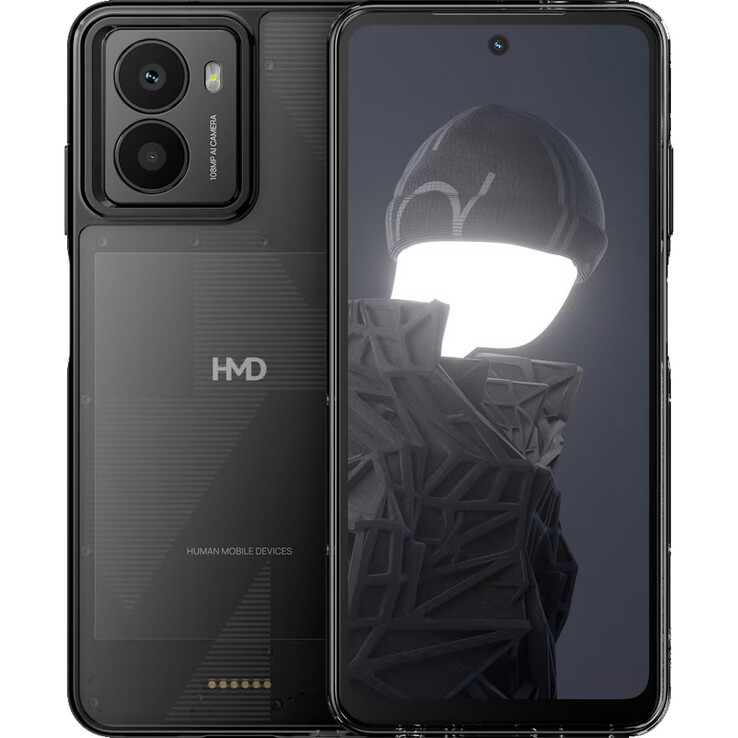
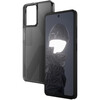

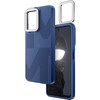




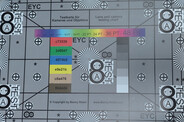





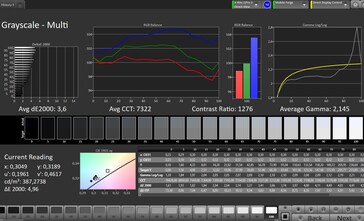

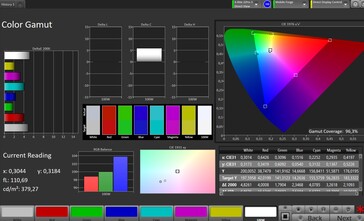

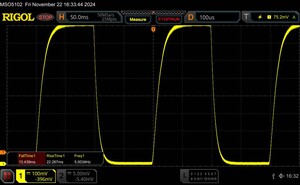
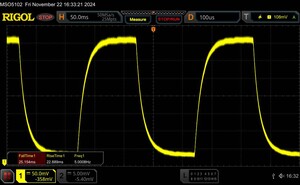


 Total Sustainability Score:
Total Sustainability Score: 